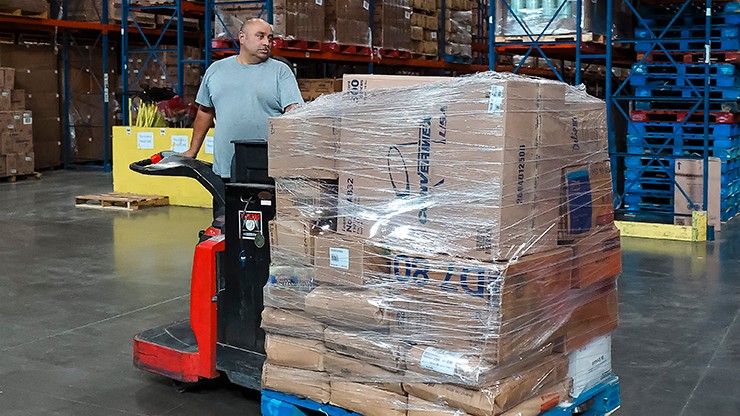How to Prepare for Changes in LTL Freight Class Codes

There is a lot of work that goes into shipping freight, and keeping track of all the details can be stressful for shippers. We've been in the transportation industry for more than 63 years, and as a company that is Driven for You™ it's important that we stay up to date on any changes that may impact our customers.
The National Motor Freight Traffic Association (NMFTA) has announced major changes to freight class codes for less-than-truckload (LTL) shipments effective July 19, 2025. This will affect the way some LTL shipments are priced, so we talked with Keith Peterson, director of operations at the NMFTA, about these changes to help keep you informed.
Keep reading our full Q&A with Peterson below to learn how these changes might impact your shipments and how J.B. Hunt can help you navigate them.
What is the difference between full density and modified density?
Keith: Going forward, [the] modified density scale may be used on freight that has known handling, stowability or liability issues. Modified density means that the item will have two or more classes that may be assigned to the item based on characteristics of the item.
Full density is the class scale we are going to use going forward for freight that has no known handling, stowability and liability issues. It will allow that freight to be classified by density, meaning how much room it takes up in the trailer.
What are some examples of the types of freight affected by this change?
Keith: Think of standard freight that fits on a pallet and is easy to handle and stow in the trailer. By adding classes 50 and 55 to the full density scale, we are now able to make heavy and dense freight full density. It is about simplifying and standardizing classification across the board.
.png)
.png)
“[The goal of these changes] is to simplify the process. Before you would have to find the right item, then see what classes are available for that item after getting the density. By making density the primary characteristic it will be much more uniform and easier to apply.”
- Keith Peterson, director of operations at the NMFTA
Do you anticipate this will lead to fewer freight classification discrepancies between shippers and carriers?
Keith: This will depend mostly on shippers getting the correct dimensions and weight of the shipping units and using that information for initial rate and quote.
Would you say most LTL shippers are already collecting the height, width, length and weight of their freight or will this be new for them?
Keith: If it is not provided by the [vendor], they are getting it when it hits their dock and they get the dimensions of the freight. They would prefer getting the correct dimensions up front as it only helps with planning on pickup, etc.
How can shippers determine their new freight classifications?
Keith: We are updating ClassIT+, so they should really be looking to purchase a ClassIT+ license, and this will allow them to look up NMFC item numbers. Also, go to https://info.nmfta.org/2025-nmfc-changes, we have provided some tools and links there that can help. And you can sign up for updates as we are looking at releasing additional tools for shippers in the future.
If they haven't already, when do you recommend shippers start getting into the habit of including dimensions when getting quotes and dispatching freight?
Keith: NMFTA started moving items to full density several years ago. I would suggest as soon as possible, develop a freight profile and keep it updated.
This goes into effect on July 19. Does this mean that the new freight classifications only apply to loads booked on July 19 and after?
Keith: There is no rule on this and it will likely be by carrier. I know the carriers will be switching over to the updated item numbers on July 19, so it could affect both loads that are already shipped and new loads. It will [depend on] when it is invoiced.
What do you think is the most important thing for shippers to know about the NMFTA freight classification changes?
Keith: Density is the primary characteristic so start getting dimensions of your freight. Go to https://info.nmfta.org/2025-nmfc-changes/shippers for more information on how shippers can prepare.
What do you think is the most important thing for carriers to know about the NMFTA freight classification changes?
Keith: Density is the primary characteristic. When talking to customers emphasize that dimensions are key going forward.
How J.B. Hunt Can Help
Because we are driven for you, our goal is to provide you with seamless service. Our people will be ready, and our technology will be up to date to help you navigate these changes on July 19. We’ve already created a guided workflow for booking LTL shipments in your J.B. Hunt 360°® account to help take out some of the guesswork when it comes to freight class and accessorial selections.
Still need more assistance finding your freight class code? Check out the examples we have here or contact your J.B. Hunt representative!

